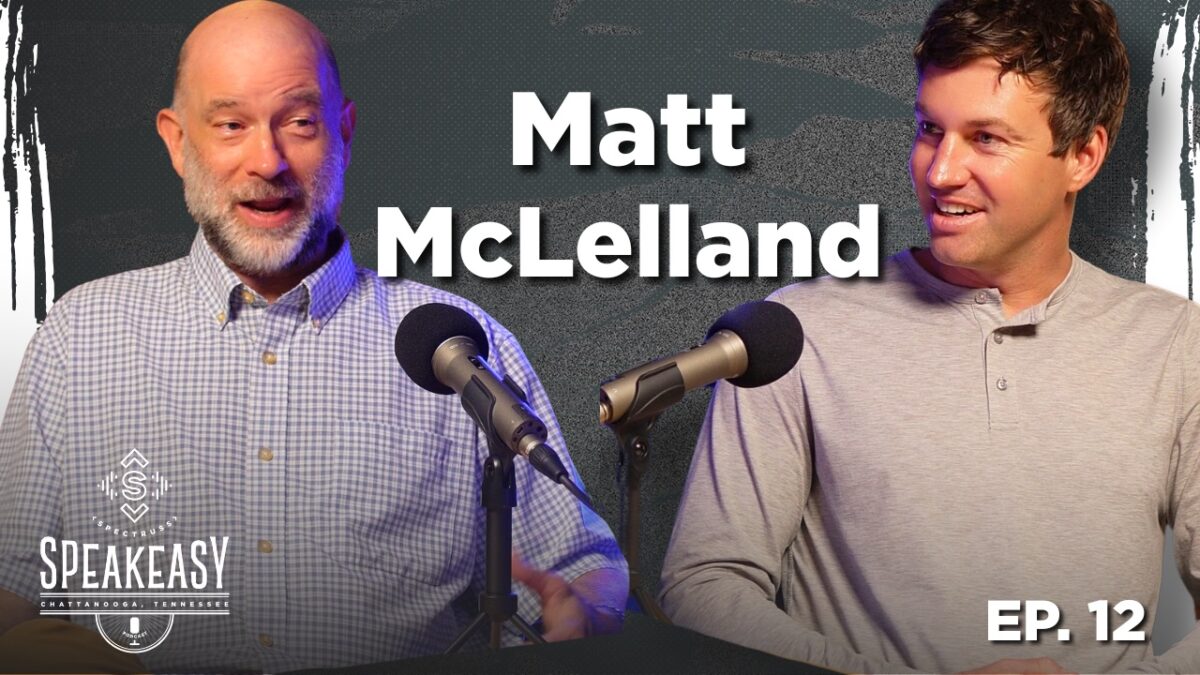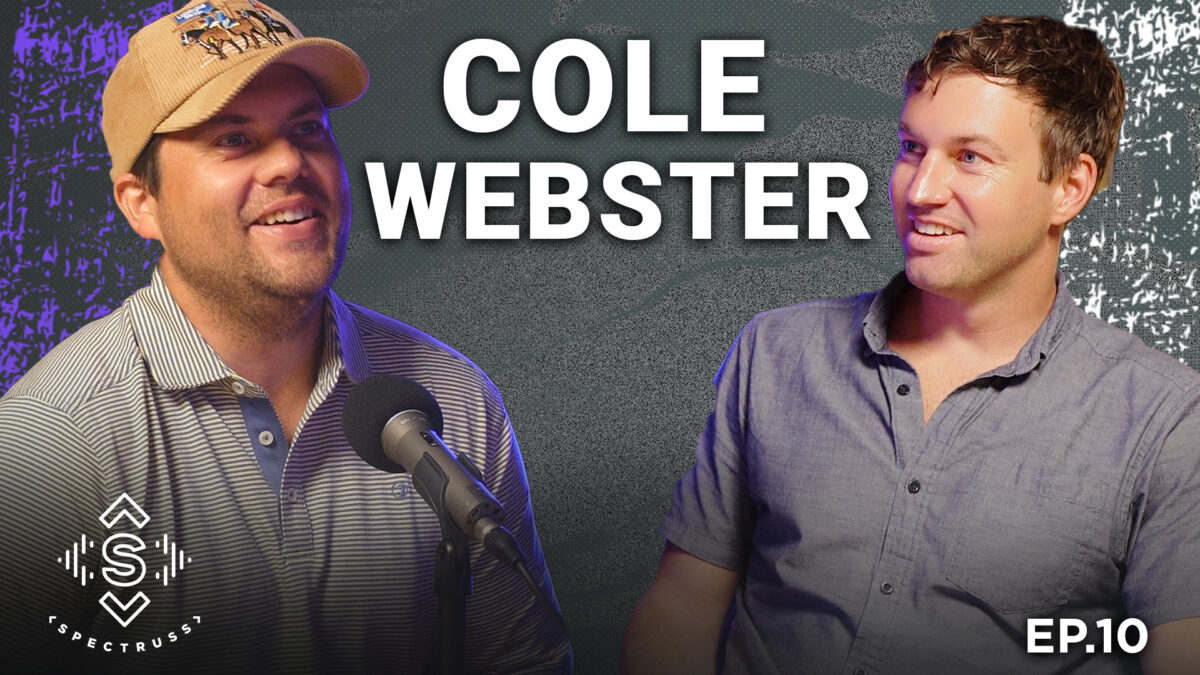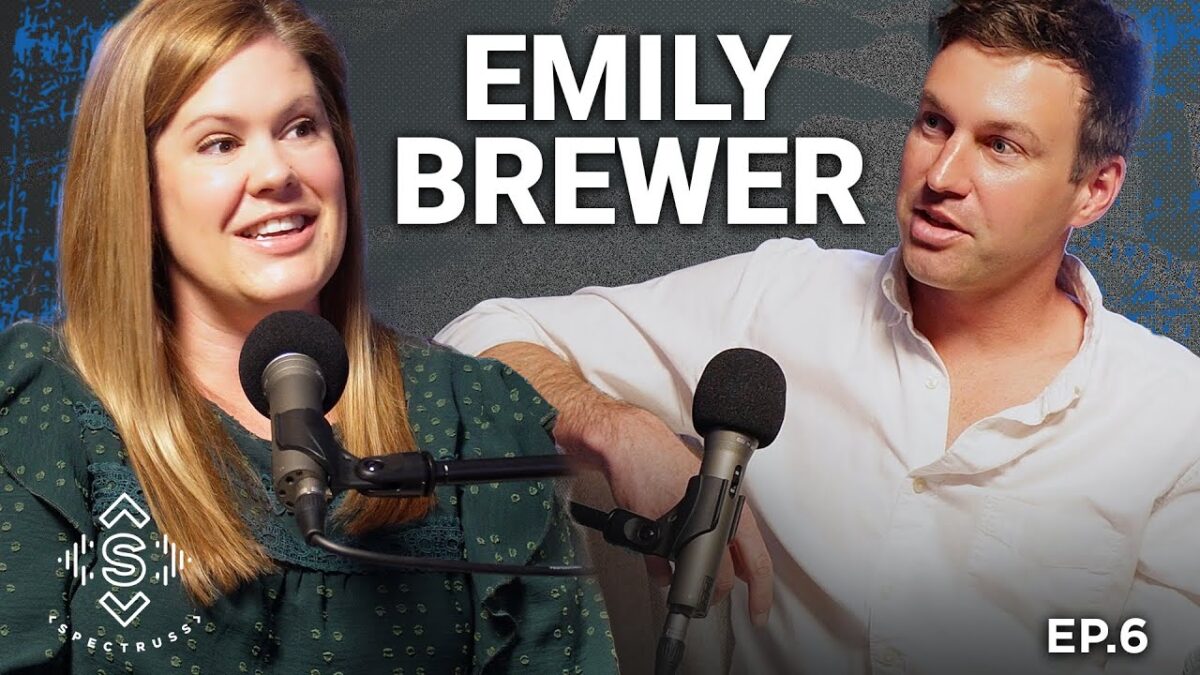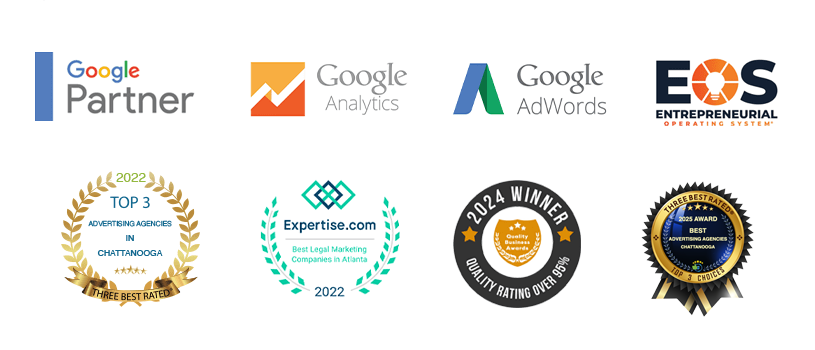
Author:Sam Silvey


What happens when a small diner idea survives a plane crash, passes through three generations, and still sticks to the same principles it started with? You get Chick-fil-A, and a whole lot more than just chicken.
In this episode of Spectruss Speakeasy, I sat down with Seth Cathy, grandson of Chick-fil-A founder Truett Cathy. And no, this wasn’t your standard business interview. This was about purpose, grit, and what really matters when you’re building something that lasts.
From Soda Bottles to a National Brand
Truett Cathy didn’t grow up with much. He started out during the Great Depression selling glass Coca-Cola bottles at age 8 and, as Seth joked, “the only toy he had was his brother’s loose tooth.” That same scrappy energy is what turned a simple diner into a fast-food empire with more than 3,300 locations.
And it almost didn’t happen. A tragic plane crash nearly cut everything short, but Truett pulled through. What stuck with Seth was not just the resilience, but the reason his grandfather got up every day, to care for people and run a business with purpose.

Paving your own way
Seth didn’t just inherit a last name, he inherited a mindset. And while his path didn’t lead him straight into the Chick-fil-A boardroom, the values stayed with him. He studied history, ran a pottery studio on Main Street in Chattanooga, and ended up building community through motorcycles.
You read that right. Vintage Hondas. 120 acres on Lookout Mountain. Off-road rides that turned into meetups with meaning. Seth has a thing for bringing people together, and it’s not just about the bikes.
What Small Businesses Can Learn
Here’s where this hits home for every small or mid-sized business: You don’t need a billion-dollar brand to build trust or make an impact. You just need to know why you started and stick to it.
Too many business owners jump straight into ads, websites, or social media without a clear message. That’s like riding without knowing where the trail goes.
You need structure. You need a brand that speaks clearly. That’s exactly what we do at Spectruss. We help you figure out your story, build tools that support it (like custom websites, branding, and automated systems), and then get that story in front of the right people.
Why This Episode Matters
This conversation with Seth wasn’t about being famous or successful. It was about keeping your feet on the ground, even when your business grows fast. It was about knowing that no matter how many people you serve, it still comes back to purpose, discipline, and relationships.
Your business has a story. Maybe you haven’t told it yet. Maybe it’s been buried under to-do lists and customer support calls. But it’s there, and it’s the one thing your competitors can’t copy.
We’re here to help you bring it forward.

FAQ: Questions Small Business Owners Ask
How do I figure out what my brand values actually are?
Start by thinking about why you opened your business. What do you want customers to remember about you? That’s where your values live.
Can I grow without losing what makes my business special?
Yes, if you stay consistent. Write down your story, your message, and what you won’t compromise on. Then build from there.
What slows down most small businesses when they try to grow?
Not being clear. If your message changes every month or your site doesn’t match your customer experience, it all feels confusing. People don’t buy when they’re unsure.
I’m not great at writing or storytelling. Does that matter?
Not at all. You don’t need to be a writer. You just need to be honest about what you do and why. We help shape that into branding and marketing that makes sense.
In that case, our team can help you develop your story. You got the experience an we got the rest. Contact us to discuss it further.
How can Spectruss help me?
We help businesses like yours build smart websites, create strong messaging, run ads that actually work, and set up systems that keep things running even when you’re busy.
If you are an small business owner and you are looking for a partner to achieve your marketing goals, check our service page here.

Let’s be honest, getting leads shouldn’t feel like throwing money into a black hole. But if you’re a small business owner, chances are it does. You’ve probably tried boosting posts, hiring a freelancer, or even doing it all yourself. And still… nothing changes.
At Spectruss, we help small businesses like yours turn confusion into clarity, and clicks into real customers. This article walks you through what’s missing and how to finally start generating leads that matter, with support that sticks.
What Is Lead Generation (And Why You Might Be Missing the Mark)
Lead generation means turning strangers into people who are actually interested in your product or service. But here’s the thing: not every click or follow means someone wants to buy.
A real lead is someone who’s ready to reach out. If your inbox is full of junk leads (or totally empty), your approach probably needs some changes.

Why Most Small Businesses Struggle with Getting Leads
Here are the common problems we see:
- Your website is slow or confusingYou’re running ads with no plan (or just hitting “boost” on Facebook)
- You have no system to track or follow up with leads
- Your branding doesn’t feel consistent or professional
Sound familiar? It’s not your fault. You’re focused on running your business, not trying to figure out how online marketing works.
The truth: you don’t need a vendor, you need a partner.
Vendors sell you one thing. Partners create full strategies that support your growth.
At Spectruss, we focus on long-term plans because that’s how real results happen. Our mission is simple: help your small business show up online, build trust, and bring in steady leads.
What to expect when you work with a true marketing partner:
- A plan made just for your business
- Clear updates on what’s working (and what’s not)
- Full support, from visuals to lead follow-up
- A team that’s all in on your success

What Spectruss Does to Help You Get More Leads
Here’s what we focus on every day for our clients:
1. Websites That Turn Visitors Into Customers
Fast, mobile-friendly, and built with purpose. Every page is designed to make it easy for people to call, click, or buy.
2. SEO That Gets You in Front of Local Customers
We help your business show up when people search for what you do—right down to your city or zip code. It’s smart, targeted visibility that works over time.
3. Paid Ads That Actually Perform
We run ad campaigns across Facebook, Instagram, Google, and YouTube. The goal? Reaching the right people with the right message and turning clicks into calls.
4. CRM and Automation That Keep Leads Moving
Once leads come in, we help you keep track of them. From follow-up emails to reminders, we make sure nobody slips through the cracks.
5. Branding That Feels Trustworthy
We help you look and sound like the real deal, so people trust you from the first visit.
Need a starting point? Try these 5 simple fixes
- Update your homepage: Add your phone number and a clear button like “Get a Quote.”
- Check your Google Business profile: Make sure your hours, location, and photos are current.
- Ask for more reviews: They help build trust fast.
- Figure out what service brings you the most money: Then focus your marketing there.
- Schedule a chat with someone who can help you plan your next move: Like us.
FAQs About How To Get Leads
How much should I spend on lead generation?
A good starting point is about 5–10% of your revenue. For businesses trying to grow quickly, spending a bit more on targeted strategies makes a real difference.
Do I need both SEO and ads?
If you want leads now andlater, using both works best. Ads help short-term, SEO helps you stay visible long-term.
What’s the difference between a lead and a sale?
A lead is someone showing interest. A sale happens when they buy. We help you get both.
Can social media really help me get leads?
Yes, if you’re doing more than just posting. With good targeting and messaging, platforms like Facebook can bring in customers, not just likes.
Do you have troubles with your social media?Find out more here.
How do I know if my website is the problem?
Check if your site is easy to use on a phone, loads quickly, and has a clear call to action. If it doesn’t, you’re likely missing out on leads. We can take a look and tell you what’s going wrong.
Real help starts here!
You don’t have to keep guessing. If your business isn’t getting leads, the problem might be something we can fix, quickly. We’ll help you figure it out, and we’ll stick with you while your business grows.

Most businesses don’t last. You know it, I know it. The stats aren’t great, and yet, some manage to not just hang on, but keep growing.
The Barn Nursery in Chattanooga is one of those stories. What started in the late ‘60s as a $1,500 roadside fruit stand is now an eight-figure business moving over a million plants a year. Yep, million with an “M.”
So how’d they pull it off? And more importantly, what can youtake from their playbook and apply to your own business?

From Selling Produce to Building a Brand
The Barn didn’t just pop up overnight. Cole Webster, who runs it now, comes from a family that built this thing brick by brick. His grandparents got it started, his parents took it further, and now Cole’s leading it into something even bigger.
What stands out isn’t just the scale, it’s the heart. This is a business that kept showing up for the community, year after year. That’s something I think we all want to build.
You don’t have to sell ferns to learn something here. These three things apply no matter what business you’re in:
1. Have a clear story
The Barn didn’t try to be something it wasn’t. It’s always been family-run, service-first, and plant-loving. People know exactly what to expect.
Pro tip:If your brand is all over the place, different fonts, different messages, different vibes, that’s where to start. We help clients clean that up all the time.
2. Keep showing up
Back in the day, The Barn ran radio ads. Now it’s all over social media. Different tools, same mindset: stay in front of people.
Our advice:Ads aren’t optional if you want to grow. And when you run them the right way, they pay for themselves.
3. Talk like a human
Automated systems might be efficient, but they’re also annoying. One thing The Barn does well, and we try to do too, is keep things personal. Real conversations, fast help.
Here’s what we hear all the time from small and mid-sized businesses:
- “Our website’s outdated.”
- “We’ve run ads but didn’t get results.”
- “We’re not tracking where leads come from.”
- “Our brand looks different everywhere.”
Any of those sound like your business? You’re not alone, and you don’t have to fix it by yourself.
What We Do at Spectruss
I built Spectruss to help businesses like yours. We’re not here for one-time jobs. We’re your crew for the long haul.
Here’s how we help:
- Custom websites that don’t just look good, they perform
- SEO that helps people actually find you
- Ad campaigns on Google, Facebook, and Instagram
- CRM systems that organize your leads and automate follow-ups
- Branding and messaging that connects with your audience
- Photos and video that tell your story

We’re based in Chattanooga, but we’ve helped brands across the U.S. get real results. And we’re not about fluff. We care about leads, conversions, and building something that lasts.
Let’s talk, get a free call or get to know more about our services.
What I admire most about The Barn Nursery is how they’ve held on to what matters: good people, good service, and showing up when it counts. That’s what we try to do at Spectruss too.
You don’t need to be the biggest business in town, you just need to show up smart and stay consistent.
Here are my thoughts
If a roadside stand in Rossville can grow into one of the most recognized businesses in Chattanooga, so can you. You’ve got a story. Let’s make sure people see it.
Want help making that happen?
Book a free consultationor call usand we’ll figure out what your next step looks like, no pressure.
FAQ: For Local Businesses Ready to Grow
How do I know if working with Spectruss is the right move?
If you’re ready to grow but not sure what to do next, that’s where we come in. If your brand is scattered or your ads aren’t working, you’ll benefit from having a team on your side.
Do I need to spend a lot to get started?
No. We work with businesses at all levels. We’ll help you figure out what matters most and start there. No fluff, no upsells.
What makes Spectruss different?
We act like a partner, not a vendor. Our team works in-house and we’re all local. We treat your business like it’s ours, with care, clarity, and accountability.
I’ve never done ads before. Can you help?
Absolutely. We’ll explain how it works, set them up, track results, and adjust as needed. You’ll always know what you’re paying for, and what it’s bringing in.
Can you help me rebrand or refresh my business?
Yes, whether you need a new logo, better messaging, or a full revamp, we’ll make sure it still feels like you, just sharper and more focused.


Companies using AI see 2x the conversion rates. So, what AI-driven strategies are actually worth it?
If you’re running a business, you know the pressure: grow your company andmanage your digital marketing strategy. That alone can take more time than you have. The good news? AI in marketingis now accessible and proving effective for businesses of every size.
Let’s break it down clearly.
The numbers speak for themselves
You no longer need a massive team or budget to put AI to work. In fact, small and mid-sized businessesare seeing major benefits.
Why?
- AI-powered marketinghelps you work more efficiently
- It helps you make better decisions with real-time data
- You reach the right customers, faster
Recent reports show companies using AI in their marketing are doubling their conversion rates. That includes local service providers, retail stores, and healthcare offices, not just tech giants.
Why small businesses are getting serious about AI
Let’s say you run a dental practice or a local shop. You don’t have time to manage low-performing ads or content no one sees. AI helps by:
- Learning what performs well and what doesn’t
- Putting your message in front of the right audience
- Giving you faster insights and more control over your strategy
In short, it helps your business digital marketingwork smarter.
5 AI-Driven strategies that actually work
Here are a few top digital marketing strategiesthat use AI — because they deliver results:
1. Smarter Targeting
AI identifies people most likely to buy from you and serves them the right message at the right time.
2. Ad Campaign Optimization (Google & Instagram)
AI tools adjust bids and placements automatically, so your ads perform better and cost less.
Interested in growing your reach? Look into instagram ad campaignplanning and advertising on instagram costestimates.
3. Content and SEO Support
From keyword research to blog outlines, AI helps speed up content creation while helping you rank for current marketing trendsand more.
4. Chat Automation
AI can answer questions, set appointments, or collect lead information automatically, saving you time.
5. Email Personalization
Send emails based on customer behavior, improving open rates and results.
AI is only as good as your strategy
No tool will fix a poor plan. That’s why your marketing needs to be clear and goal-driven from the start.
At Spectruss, we use AI to help our clients work smarter. Whether it’s paid ads, SEO, branding, or other support, we tailor everything to the business and goals.
We’ve helped local companies move from page 3 to page 1 on Google, double their monthly leads, and clean up confusing ad accounts.
Common misunderstandings about AI in marketing
Some business owners think AI is too expensive or hard to use. The truth is:
- AI tools are now affordable and easy to scale
- You stay in control — it just makes things more efficient
- You don’t have to do it alone — the right agency can help manage it
How to Get Started With AI in Your Business
Start by reviewing your current marketing efforts. Where are you spending too much time or budget with little return?
Next, look at what can be improved or simplified with better tools or support.
And finally, find a team like Spectruss that understands your business and can help put the right systems in place.
What’s Next?
AI isn’t just a buzzword. It’s part of how smart businesses run their marketing today, and do it with less stress and better results.
When used with a clear plan and the right support, it can help you reach more people, improve performance, and use your time and budget more effectively.
Visitspectruss.comto see how we help businesses like yours grow with confidence.
FAQ: AI in Marketing for Small Businesses
- Do I need a big budget to start using AI in my marketing?
No. Many AI-powered tools are affordable and built for small to mid-sized businesses. From ad automation to email tools, you can start small and scale as needed. - Will AI replace my marketing team?
Not at all. AI supports your team by handling repetitive tasks like data analysis or ad adjustments. It allows your team (or agency) to focus on strategy, creative, and growth. - What’s the difference between AI in ads and traditional ad tools?
AI uses real-time learning to adjust your ads while they run, improving targeting, timing, and budget allocation based on what’s actually working, not just fixed rules. - Can AI help with local marketing?
Yes. AI tools can focus on location-specific keywords, audience behavior, and even local ad delivery, making it easier to compete in your area, especially if you’re targeting searches like “marketing companies Chattanooga.” - How do I know which AI tools are worth using?
Start by identifying your biggest pain point: leads, ad costs, content, etc. Then look for tools (or an agency) that specializes in solving that. Better yet, work with a full-service team like Spectrussthat can recommend and manage the right tools for your goals.

When a business and a lifestyle merge, it creates something unforgettable. That’s exactly what happened when John Wiygul, founder and CEO of High Point Climbing and Fitness, sat down with Sam Silvey on the latest episode of Spectruss Speakeasy. It wasn’t just a chat about climbing or fitness, it was about real ambition, smart risk-taking, and building something that reflects what you believe in.
Chattanooga roots, national reachJohn grew up in Chattanooga and built something local that now spans eight climbing gyms across three states. He started with a love for climbing, skipping elementary school to hit the rocks with his brother, and turned that into a brand that’s now one of the most respected climbing names in the Southeast.
The gyms are more than places to work out, they’re hubs for people who want a better way to move, connect, and grow. From digging a pit under a parking garage for their first downtown gym to developing a massive 49,000-square-foot facility in Orlando, John’s story is built on commitment, smart thinking, and relentless consistency.
Coffee, culture, and communityJohn didn’t stop with gyms. He and his team launched Trail Town Coffee, a café right next to High Point’s downtown Chattanooga gym. It wasn’t just about caffeine. It was about creating an experience that matched the energy of the community. Sandwiches, specialty drinks, and a direct pass-through to the gym turned it into a local favorite.
This episode wasn’t only about climbing walls and workout routines. Sam and John talked about burnout, discipline, and what it takes to stay grounded while growing fast. From hard races in Puerto Rico to the grind of managing over 150 employees, the theme stayed the same, you can grow a strong business without losing your identity.
For small businesses: lessons from the wallJohn’s story hits close for any small to mid-sized business owner. Why? Because he started with a niche, went all in, and built it brick by brick, literally. And he did it while keeping his team close and his mission clear.
If you’re building something that matters, this episode is a reminder that you don’t have to play by outdated rules. You can shape something new, something exciting, and something that really reflects your values.
Want to hear how he did it, mistakes, milestones, and all? Listen to the full episode of Spectruss SpeakeasyonSpotify,Apple Podcasts, or your favorite platform. And check out more about what we do atSpectruss.com.
FAQ: What You Might Still Be Wondering
- What is Spectruss Speakeasy?
It’s a podcast from Chattanooga-based agency Spectruss, hosted by Sam Silvey. Each episode brings real conversations with business owners, creatives, and people shaping their industries. - Who is John Wiygul and why is his story helpful?
He’s the founder of High Point Climbing and Fitness. He’s grown a small local idea into a multi-location brand without losing its soul. His experience is relatable for any business trying to scale while staying true to their values. - What can other industries take from this episode?
Whether you run a coffee shop, creative agency, or retail space, John’s focus on clear branding, smart expansion, and customer connection applies across the board. - How does Spectruss help brands like High Point?
We help businesses build websites, create brand strategy, manage digital marketing, and deliver results through paid ads, content, and design. Learn more atspectruss.com. - What’s the biggest message from the episode?
You don’t have to be corporate to be successful. Being involved, staying consistent, and doing things differently still works, and it’s working for High Point.



Running a business is hard. Running a dermatology clinicin the age of TikTok trends and “I saw this on Instagram” diagnosis? Next level.
That’s why we kicked back with Dr. Emily Brewer, Founder and CEO of https://thedermcentertn.com/(and honestly, one of the sharpest minds in skincare) in our latest Spectruss Speakeasyepisode. This one? It’s part real-world medicine, part marketing therapy, and 100% no fluff.
Welcome to Modern Dermatology
Dr. Emily Brewerdidn’t build a brand on hashtags and hope. Her clinic The DERM Centeris a go-to spot in Chattanooga because she knowsher practice, and knows how to talk about it online without sounding like a robot.
Dr. Brewer’s story hits home for any small to mid-sized business in Chattanooga trying to grow in a competitive field. Her clinic was built on the idea of simplicity and accessibility, no insurance, no rushed appointments, just real results. But with that kind of shift comes its own set of hurdles.
So What’s the Real Issue?
- Trust Isn’t Clickable
Marketing healthcare is like building a relationship, except you have about 0.2 seconds before someone scrolls past you for a dog reel. Dr. Brewer chats about how hard it can be to show expertise and warmth… all in a square image. - Content That Doesn’t Feel Cringe
She isshowing up on socials with smart, honest, helpful posts. Working with the Spectruss team, she’s figured out how to balance her brand tone with engaging social contentthat doesn’t scream “We paid someone $2K for this Canva post.” - The Tech Stress is Real
Ads? Meta? Pixel tracking? For a doctor trying to help people, learning the Facebook Business Manager is like the last thing in her priority list. That’s where our Spectrusscrew comes in. From Instagram ad specsto targeting the right audience, we’ve helped bring Dr. Brewer’s message to the right audience.
From the Exam Room to Entrepreneurship
Opening her own dermatology clinic wasn’t just a business decision, it was personal. Dr. Brewer was tired of the red tape and five-minute patient visits, so she created a direct-pay model that puts patient experience first. That meant building a brand from scratch. No hospital support, no referral pipeline—just her name and a belief that people deserve better care.
That’s where smart marketing steps in.
Why Dermatologists (and All Businesses) Need a Clear Brand
Your services might be top-tier, but if your online presence looks outdated, potential patients (or customers) might scroll right past. Dr. Brewer talked about the effort it took to get her website, social media, and messaging to reflect what actually makes her clinic different. Her success reminds local business owners that having the right digital marketing strategyreally matters.
What Other Business Owners Can Learn
Whether you’re running a med spa, fitness studio, or your grandma’s biscuit empire, authenticity + smart content + actual strategystill wins. Don’t just chase trends. Build trust. Talk like a real person. And find a marketing agency that actually gets you.
Got Questions? Pull Up to Our Open Mic
Dr. Brewer did. You can too. Every Wednesday at 1PM EST, our Open Mic Sessionslet business owners bring their challenges, questions, or just hang with Sam(our CEO, marketing madman, and podcast host).
Ready to Build Your Brand with a Real Strategy?
No buzzwords. No BS. Just smart moves, good people, and marketing that works.
Check out the full podcast, and let us know what you think. And, if your ads are stressing you out? Let’s fix them.
FAQ: Marketing for Dermatology Clinics & Local Businesses
- What is Spectruss Speakeasy?
Spectruss Speakeasyis a podcast hosted bySpectruss, a Chattanooga-based agency helping small and mid-sized businesses grow through smarter digital marketing. Each episode features business owners and creatives who share their stories and what’s working for them. - Who is Dr. Emily Brewer?
Dr. Emily Breweris the founder ofThe Derm Center, a clinic offering personalized dermatology care without insurance hassle. Her model focuses on quality care and patient connection. - How does Spectruss help clinics like hers?
We help clinics design clean websites, improve their SEO, and run smart, targeted ad campaignson platforms like Google and Instagram. It’s not about spending more, it’s about using your budget wisely. - I’ve never run paid ads. Can Spectruss help me start?
Absolutely. We’ll help you set up Instagram ads, track results through Ads Manager, and make sure your campaign fits your goals and budget. - Can this approach work for businesses outside of healthcare?
Yes. Whether you’re in landscaping, tech, or food service, these same marketing and advertising strategiesapply. If you want to grow your audience and increase sales, we’re here to help.
Check out more resources and updates from our team atspectruss.com, or follow us on Instagram @spectrussllc.








